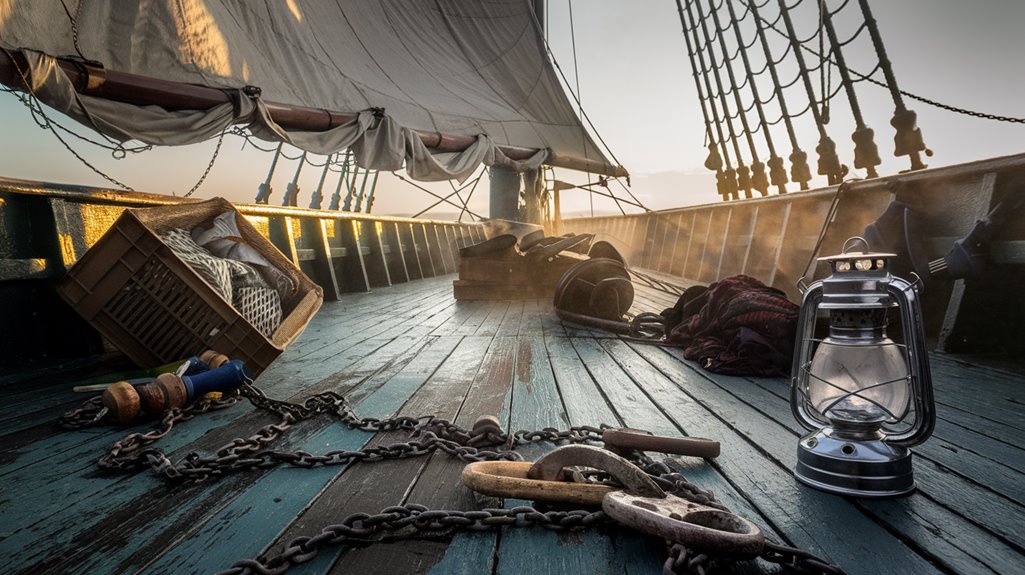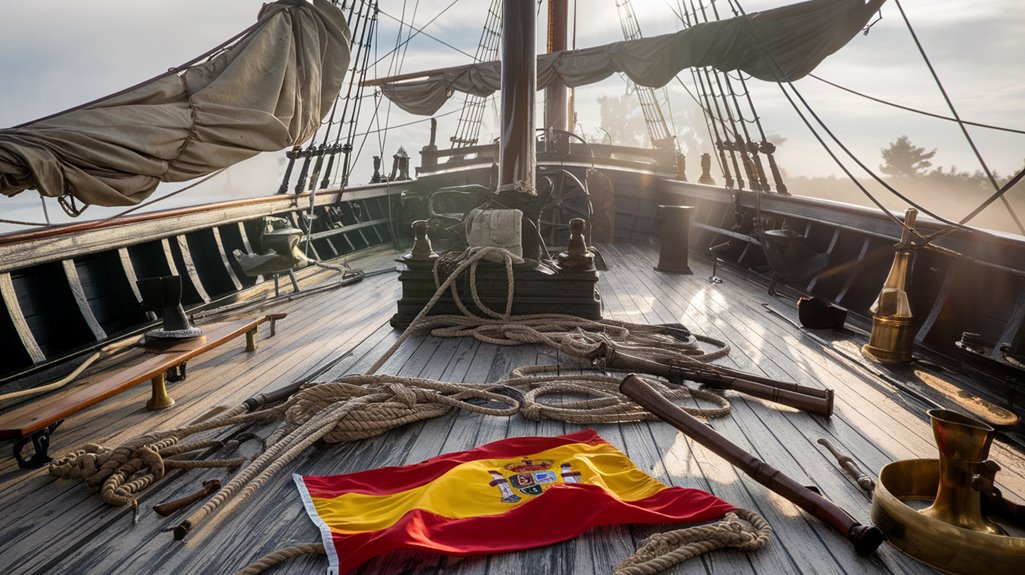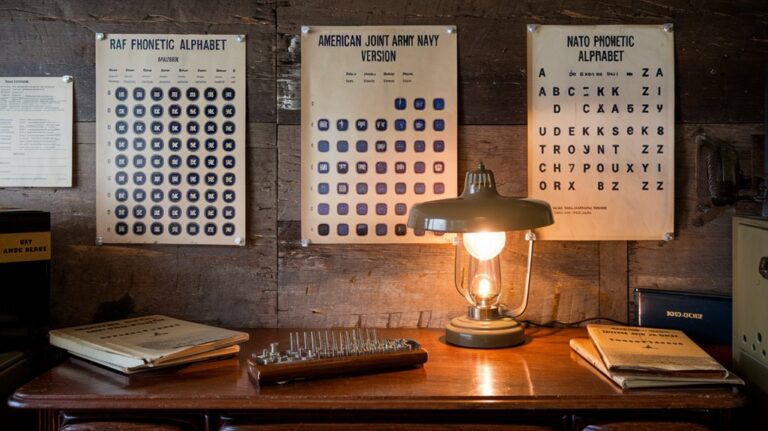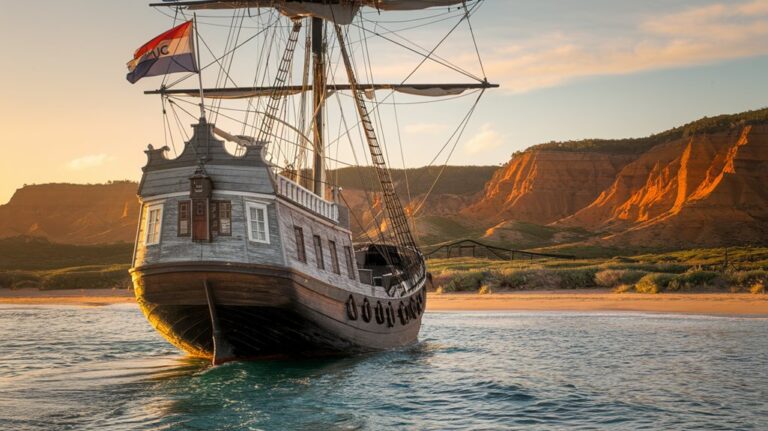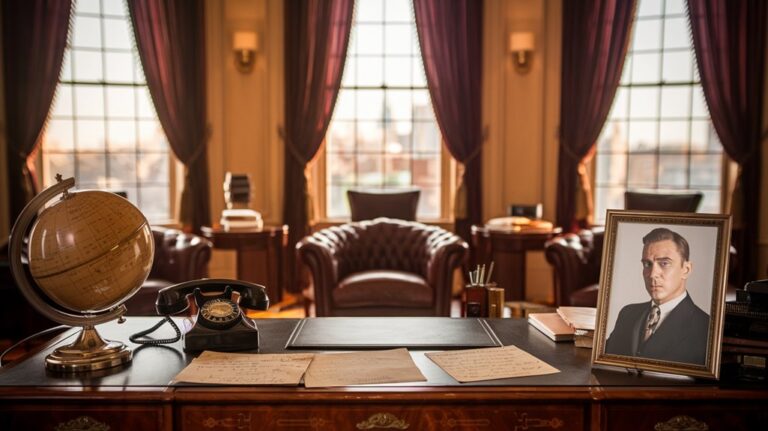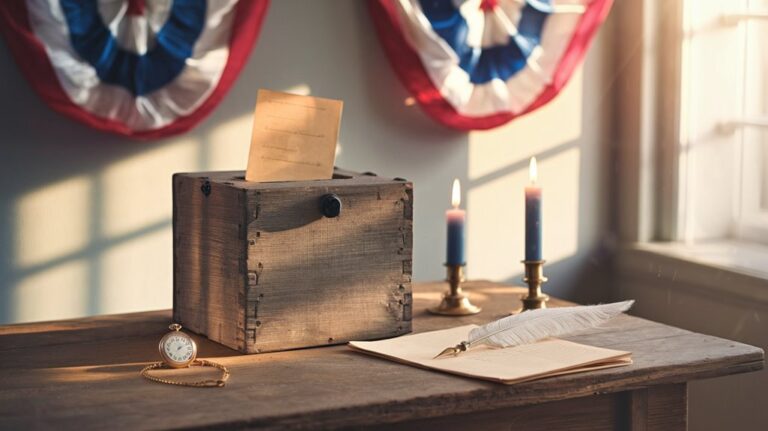Amistad’s Mutiny: Enslaved People Fighting for Freedom
You've likely heard of slave rebellions, but the Amistad mutiny stands apart as a remarkable example of the human spirit. When Joseph Cinqué and his fellow captives seized control of the Spanish schooner in 1839, they didn't just fight for their immediate survival – they ignited a legal battle that would shake America's conscience. Their daring uprising at sea launched a chain of events that would challenge the very foundations of slavery and human rights in the United States.
The Brutal Journey From Sierra Leone
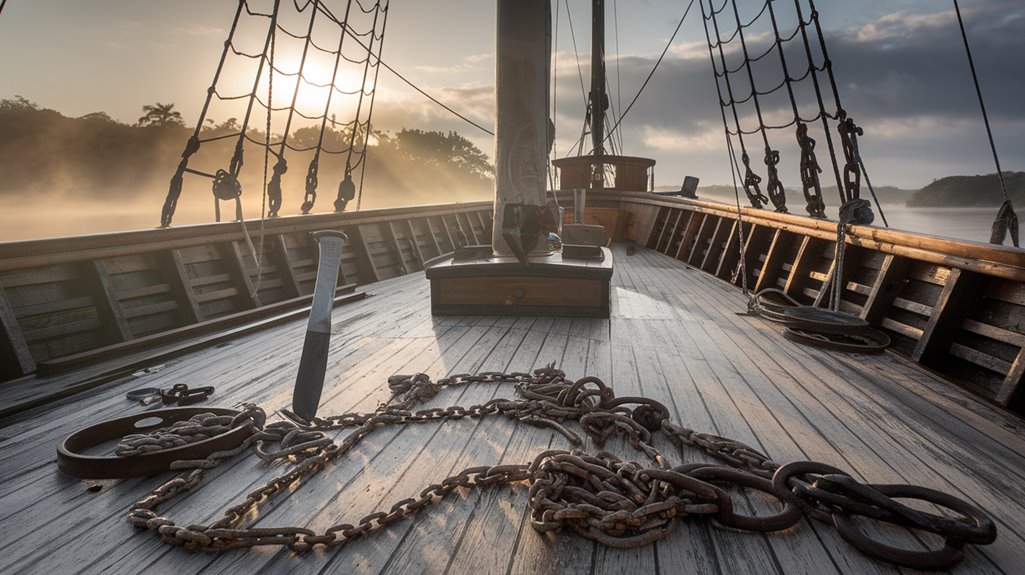
In February 1839, Portuguese slave hunters violated British law by capturing 53 Africans from Sierra Leone for sale in Cuba.
Despite their cultural resilience, these captives endured two months of harsh conditions aboard the Portuguese slave ship *Tecora*, packed alongside hundreds of other enslaved Africans.
The captives came from a region where local slavery was less severe than the brutal conditions they now faced, with slaves traditionally having limited rights and opportunities for status advancement.
When the *Tecora* reached Havana, two Spaniards, Jose Ruiz and Pedro Montes, purchased the Sierra Leoneans – 49 adults and four children.
You'll find that their ordeal only worsened as they were transferred to the Amistad where brutal treatment and poor feeding continued.
The captives' suffering reached a breaking point when Joseph Cinqué freed himself and led the others in their fight for liberation.
The Spaniards planned to resell them at sugar plantations in Puerto Principe, but the captives' desperate circumstances would soon lead them to take extraordinary action to reclaim their freedom.
The Spark of Rebellion at Sea
Life aboard the Amistad reached a breaking point on July 2, 1839, when the ship's cook, Celestino, made a threatening gesture suggesting the captives would be killed and eaten upon reaching their destination.
This cruel act sparked a daring freedom struggle led by Joseph Cinqué, who discovered a nail to release their chains.
The mutiny tactics were swift and decisive. Once freed, Cinqué and Grabeau located sugar cane knives hidden in boxes and coordinated an uprising. Their fight for justice would later reach the United States Supreme Court.
You'll find it remarkable that their strategy included forcing Montes to sail into the sun, mimicking their previous route from Africa.
During the revolt, just 20 miles off Cuba's coast, the cook and captain were killed.
Though the captives gained control, Ruiz and Montes secretly steered them northward, leading to their eventual capture off Long Island. Of the original 53 Africans aboard, only 43 captives survived the harrowing journey.
Captured by American Forces
Late August 1839 marked a turning point for the Amistad's crew when U.S. Navy forces discovered them near Montauk Point, Long Island.
Within the historical context of America's divided stance on slavery, Lieutenant Thomas R. Gedney and the USRC Washington intercepted the Africans while they were bartering for supplies onshore.
Under the leadership of Joseph Cinqué, the Mende rebels had successfully taken control of the ship after staging their revolt at sea.
The legal implications of their capture were complex, as you'd find:
- The U.S. Revenue-Marine took initial custody before transferring the Africans to Connecticut's District Court
- Lt. Gedney claimed property rights under international admiralty law
- The Supreme Court ultimately declared the 53 Africans free, rejecting their classification as slaves
This capture led to a landmark case that challenged America's legal system, setting a significant precedent in the fight against slavery and raising public awareness about the brutal nature of the slave trade. The Africans had endured brutal conditions in chains during their journey from Cuba before successfully organizing their rebellion.
The Battle in American Courts
After their capture off Long Island, the Amistad Africans faced a complex legal battle that would test America's moral stance on slavery.
The United States District Attorney initiated court proceedings that included libels for salvage and questions about the legal possession of the Africans.
You'll find their court strategies were bolstered by powerful allies, including former President John Quincy Adams and the Christian Missionary Association, who helped prove they weren't Spanish property but free people illegally kidnapped from Africa.
Despite pressure from Spain and Southern states, the Supreme Court's 7-1 ruling in 1841 established vital legal precedents.
Justice Story's decision confirmed that the Africans were victims of fraud, not criminals or slaves. This verdict challenged the institution of slavery itself and strengthened the abolitionist movement.
Through private funding, 35 survivors eventually returned to Africa in 1842, while Antonio, the captain's slave, escaped with help from abolitionists.
John Quincy Adams's Supreme Court Defense
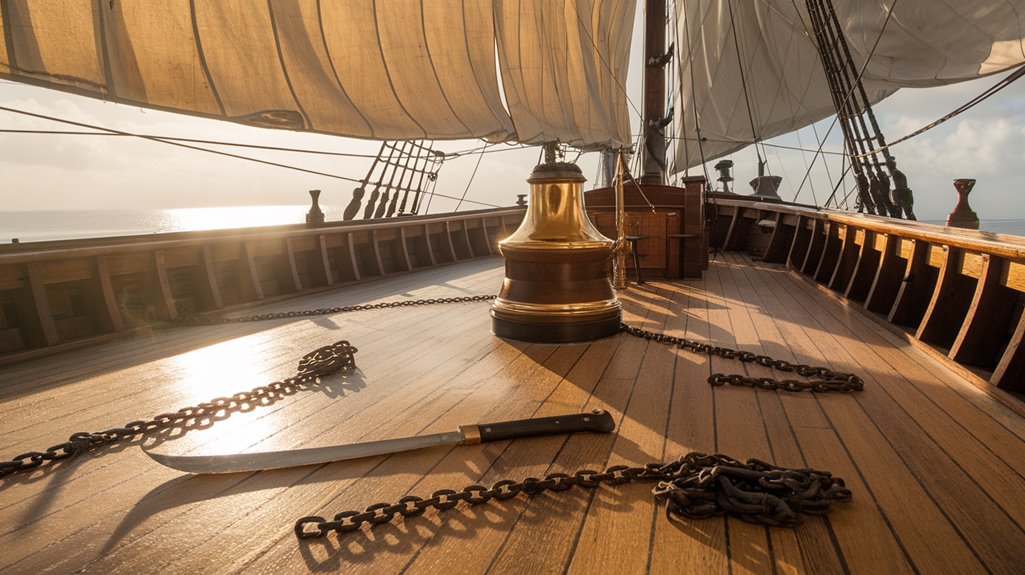
Former President John Quincy Adams delivered one of the most influential Supreme Court defenses in American history when he represented the Amistad captives in 1841.
Before taking the case, Adams expressed deep feelings of incompetency about his ability to effectively advocate for the captives.
Adams's strategy centered on presenting the case as a test of American ideals while emphasizing international law and natural rights.
The 73-year-old congressman crafted arguments that highlighted:
 loose nail to break free from their chains and take control of the ship. The center's cultural narratives have been vital for preserving the authentic voices and experiences of those who fought for freedom.
loose nail to break free from their chains and take control of the ship. The center's cultural narratives have been vital for preserving the authentic voices and experiences of those who fought for freedom.
You can trace the Amistad's enduring significance through the Amistad Research Center in New Orleans, which preserves essential documents of Black history and the African Diaspora.
The center's partnerships with artists and scholars guarantee that this pivotal moment in history continues to inform contemporary discussions about justice and equality.

